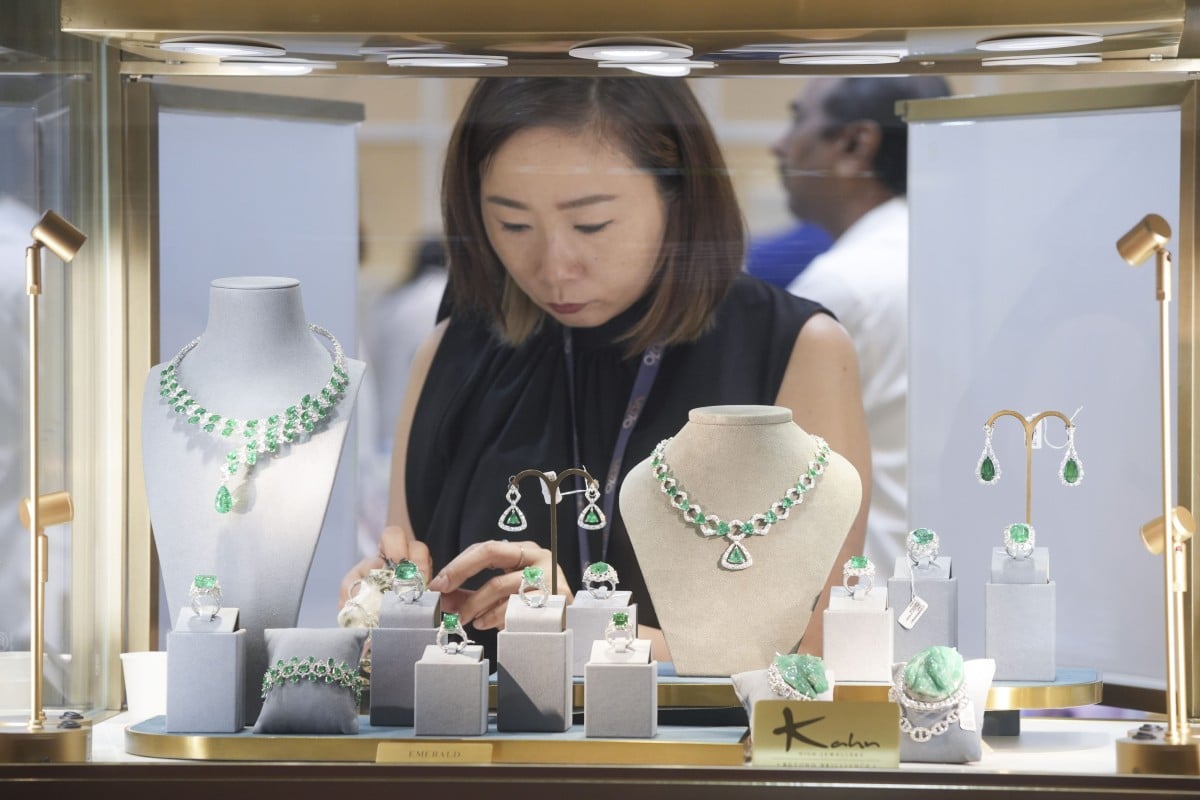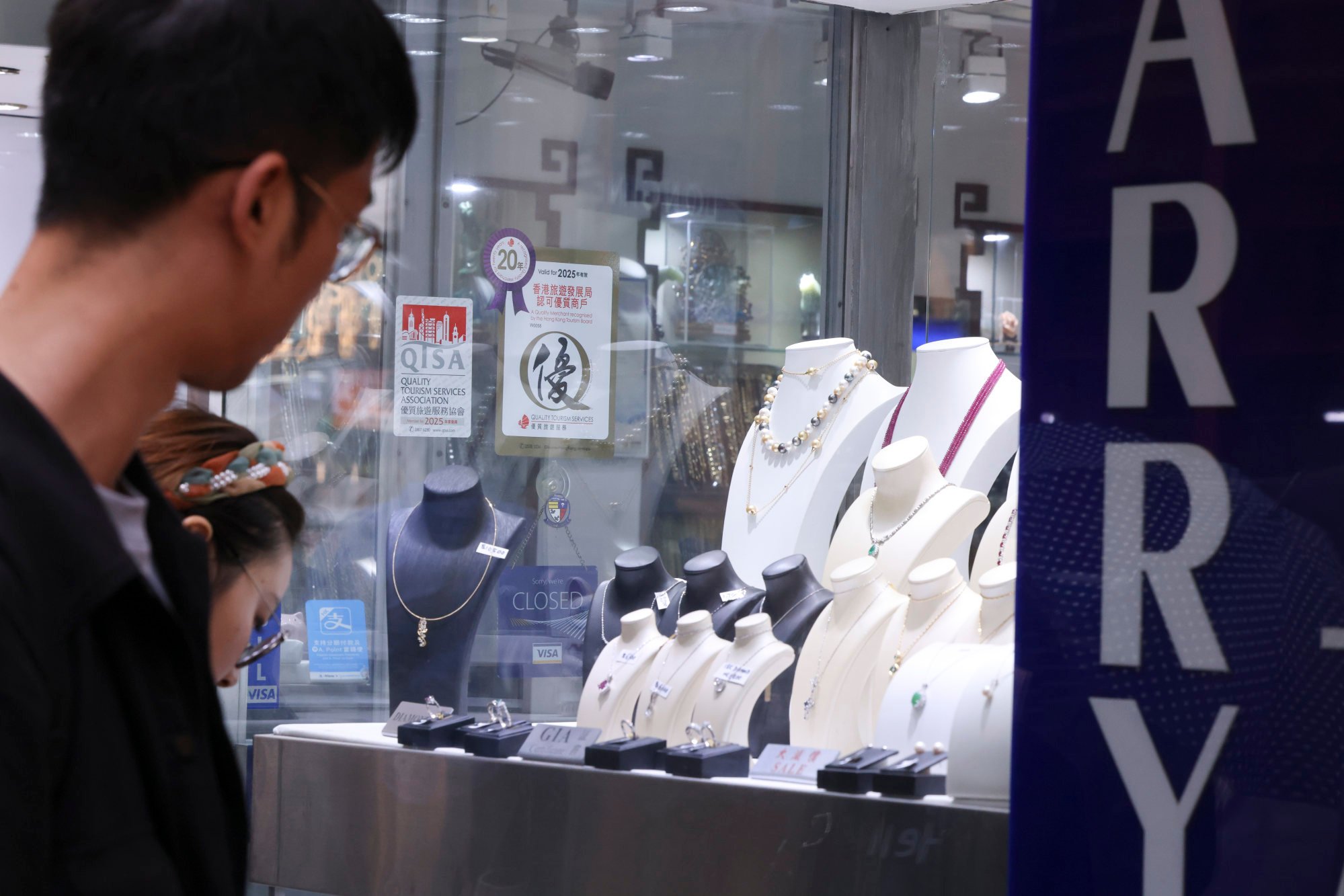Hong Kong jewellers weigh reducing US exposure, relocating amid Trump’s tariffs

Hong Kong jewellers will be forced to reduce their exposure to the US, scale back operations, relocate production or even close down, as American President Donald Trump's decision to impose tariffs on Chinese exports raises levies to as much as 60 per cent, industry leaders have said.
The latest tariffs of 34 per cent on Chinese exports, effective on April 9, would double retail prices, fuel inflation, reduce sales of these goods to the US and potentially force some exporters out of business, industry figures told the Post.
They added that a 10 per cent blanket tariff on virtually all countries meant the jewellers' workaround option of relocating production to Southeast Asian countries was no longer feasible.
Do you have questions about the biggest topics and trends from around the world? Get the answers with SCMP Knowledge , our new platform of curated content with explainers, FAQs, analyses and infographics brought to you by our award-winning team.
"Many companies will choose to downsize or not to operate in the US market," Bronia Yip Mei-chu, chairwoman of the Hong Kong Jewelry Manufacturers' Association, said.
Yip said the tariff situation was particularly dire for small and medium-sized enterprises, which had limited manpower even though they might have an array of products and diverse markets, such as Europe, Southeast Asia and the Middle East.
"The only (solution) is to reduce the share of the US (exposure) and possibly increase the share of sales in other markets, Europe, and now more markets in the Belt and Road Initiative and some new Eastern European countries or Africa," she said.
But "quite some" number of companies would eventually close down, she added.
Hong Kong businesses would be hit by Washington's 34 per cent reciprocal tariff announced on Wednesday as a result of Trump's executive order.
The US is Hong Kong's second-largest export market, accounting for US$37.9 billion in merchandise in 2024.
Hong Kong exported US$2.79 billion worth of "pearls, precious and semi-precious stones" in 2024, making it the No 3 category for the city's commodities sent to the country. This was followed by the jewellery industry, valued at US$2.52 billion in 2024, according to the Census and Statistics Department.
Hong Kong's inlaid jewellery exports were among the top three in the world, and the city hosted two of the world's four biggest and most influential exhibitions, Yip added.
Yip expected the 34 per cent levy would be added to the existing tariff of 26 per cent, which was higher for the jewellery sector compared with some others. This put the final rate at 60 per cent.
Yip's jewellery firm Goldiaq Creation has 20 per cent of its revenue coming from the US, with the majority from Europe, Southeast Asia, Middle East and other places. Exporters such as her firm already shared the 26 per cent tariff burden with clients equally and would have to negotiate how to share the extra duties.
"If you want to conduct formal business, there is no way to do it," Yip said.
She said profit margins were already very low, perhaps even less than 10 per cent for wholesaling simple jewellery, which had no way to cover the tariff.
"The ultimate burden will indeed be passed on to consumers because the taxes are quite high," she said, adding this meant goods "will become more expensive".
"The 60 per cent tariff, including other expenses, may (translate) to a doubled (retail price)," Yip said. "This method may result in losses rather than gains. Why? Because it directly affects their own consumption and inflation.
"Future sales ... may not be that satisfactory."
She added that the sales of luxury goods had already weakened amid a poor economy.

Selling elsewhere was not easy given the differing product preferences in each region, Yip said, citing mainland China's strong preference for gold over the inlaid jewellery that Hong Kong specialised in.
She said immediate moves in production abroad might not be justified even amid the possibility of further increases in tariffs.
Yip noted that even although other locations such as Thailand might incur a lower rate, there were still differences in skill level and work culture, as well as increased costs in recruitment and training.
Benny Do Yuen-ling, honorary chairman of the association and a jewellery maker, said it was "not surprising" to see producers move their production back to the United States amid the latest tariffs.
Even though some jewellers shifted production to Thailand in the past few years, workers there tended to have fewer industry-related skills compared with those from the mainland and usually handled simple assembly, Do said.
The US has hit Thailand with a 37 per cent reciprocal tariff, one of the highest in the region, on top of any existing levies.
"Any current move to Thailand may not hold advantages," Do said.
Note that "numerous manufacturers depend on the American market," and that the United States "has consistently been a nation of consumers with a particular fondness for such jewelry items."
This tariff represents another setback for the city’s exporting industry following Hong Kong's initiation of legal action with the World Trade Organization in 2020 against the U.S. mandate requiring products made in Hong Kong to be marked as “Made in China.”
Yip urged Hong Kong and central authorities to discuss with Washington ways to "secure more favorable terms" and prevent such high taxes.
Is there a possibility of turning things around?" asked Yip. "In my opinion, both the Hong Kong government and the country should address this issue.
Beijing on Friday retaliated with a 34 per cent tariff on imported American goods in addition to existing duties, further escalating trade tensions between the world's two biggest economies.
But Financial Secretary Paul Chan Mo-po said there were no plans for Hong Kong to follow suit, instead pledging that the city would continue to maintain its free-port status, ensuring the flow of goods, capital and information as enshrined in the Basic Law, the city's mini-constitution.
More Articles from SCMP
SCMP Best Bets: Helene can give punters that winning Feeling at Sha Tin
4 injured in Hong Kong when car mounts pavement due to accelerator mix-up
The Hong Kong Housing Authority gets ready for another contract cycle aimed at affluent renters.
Who is Larsa Pippen's significantly younger new partner, Jeff Coby — also known as a basketball player? The Real Housewives of Miami cast member's alleged boyfriend has joined the New York Knicks and is 19 years her junior.
China showcases its military might with an uncommon, extensive missile drill in the Gobi Desert.
The article initially appeared on the South China Morning Post (www.scmp.com), which is the premier source for news coverage of China and Asia.
Copyright © 2025. South China Morning Post Publishers Ltd. All rights reserved.





